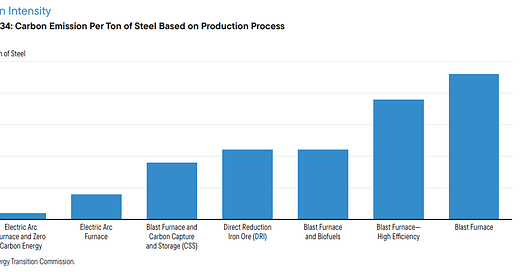Sweden dominated the production of steel in the 18th Century, churning out around one-third of global output. Although it has since been usurped by cheaper coking coal elsewhere in the world, the country is uniquely positioned to be a world leader in the production of H2-DRI green steel.
To recap, hydrogen-based direct reduced iron (H2-DRI) replaces coke or natural gas with hydrogen as the sole reductant of iron ore. The H2-DRI is then fed into an electric arc furnace (EAF) powered by renewable energy, and after further processing and the addition of carbon, the final product is ‘green’ steel.
Two centuries on the Nordic state is in a prime position to gain an early lead in the market for green steel. In addition to significant deposits of high-grade iron ore, the country also has ample supplies of zero carbon energy (both renewable and nuclear). Northern Sweden in particular benefits from a surplus of hydroelectric energy which means planned green steel plants such as H2GS Boden will be able to take advantage of relatively cheap, zero carbon electricity.
The H2GS Boden plant Sweden is at the forefront of the push towards green steel and will be the first H2-DRI plant to produce green steel commercially. H2 Green Steel (H2GS) was only founded as recently as 2020 to manufacture steel using zero carbon hydrogen and renewable energy. Production at the plant is scheduled to start towards the end of 2025 and will manufacture up to 5 Mt per annum of green steel by 2030. 1
‘Direct reduction ironmaking’ (DRI) isn’t a new technology. DRI based steel capacity produced an estimated 120 Mt of steel in 2021, accounting for around 6% of global output. In conventional DRI steel plants the reductant (typically coke or natural gas) is used to reduce iron ore pellets to produce DRI, also known as ‘sponge iron’. Conventional DRI emits ~1.2 tonnes CO2 per tonne of steel. In comparison, H2-DRI steel production emits a mere 0.1 tonnes CO2 per tonne of steel.




